#lady of the forest
Text

1K notes
·
View notes
Text




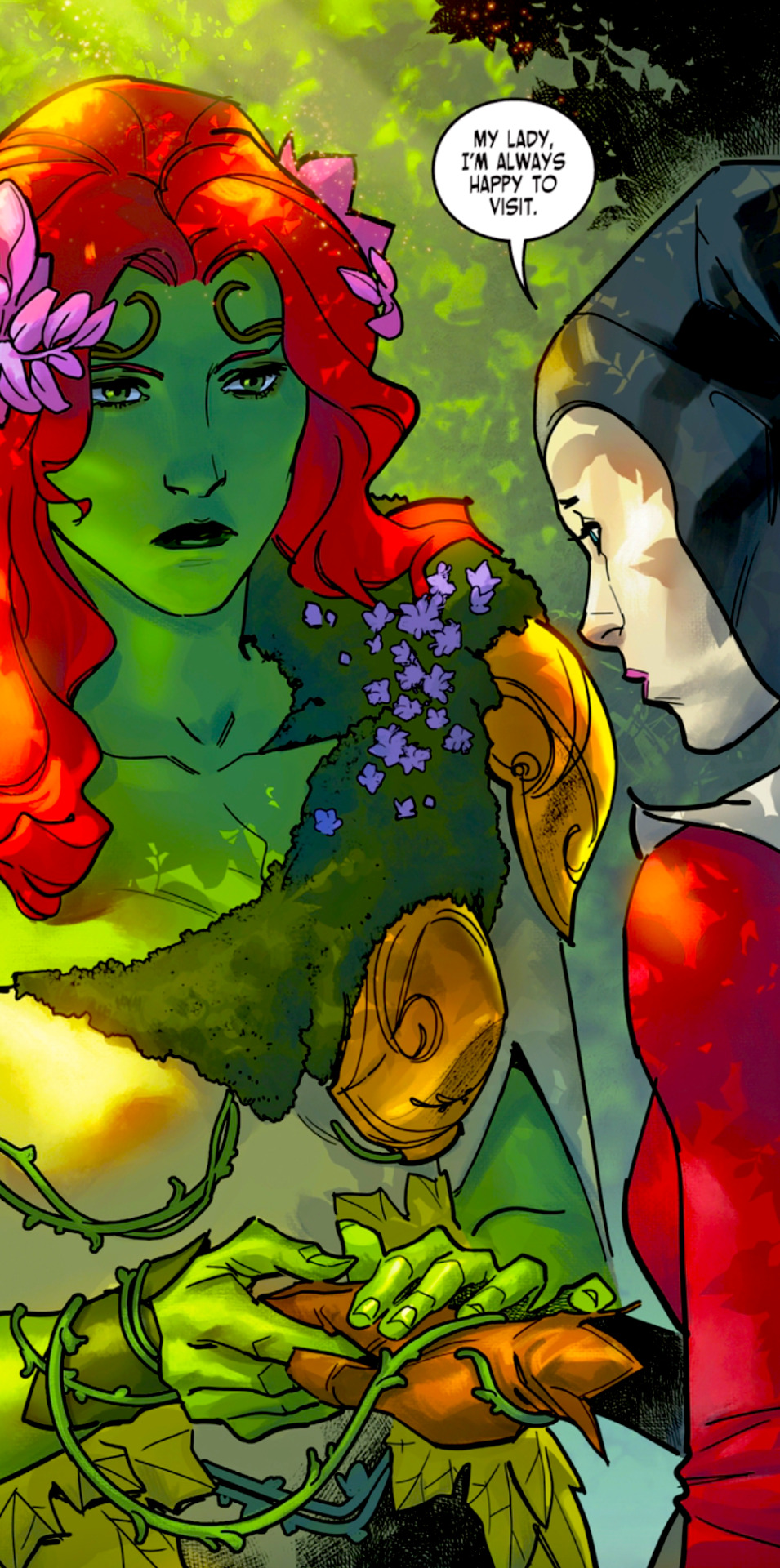


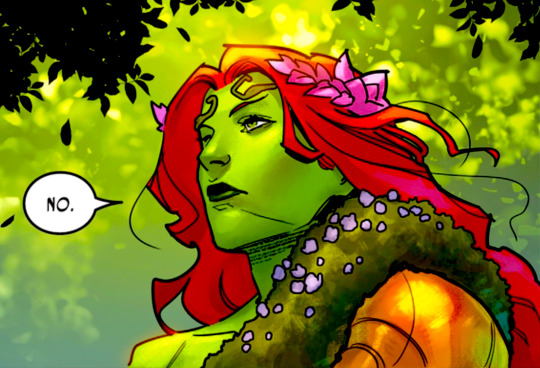
Lady of the Forest in Dark Knights of Steel #5
#poison ivy#lady of the forest#yasmine putri#dc comics#pamela isley#dark knights of steel#dc#comic book art#harlivy#harley quinn#comics
981 notes
·
View notes
Text
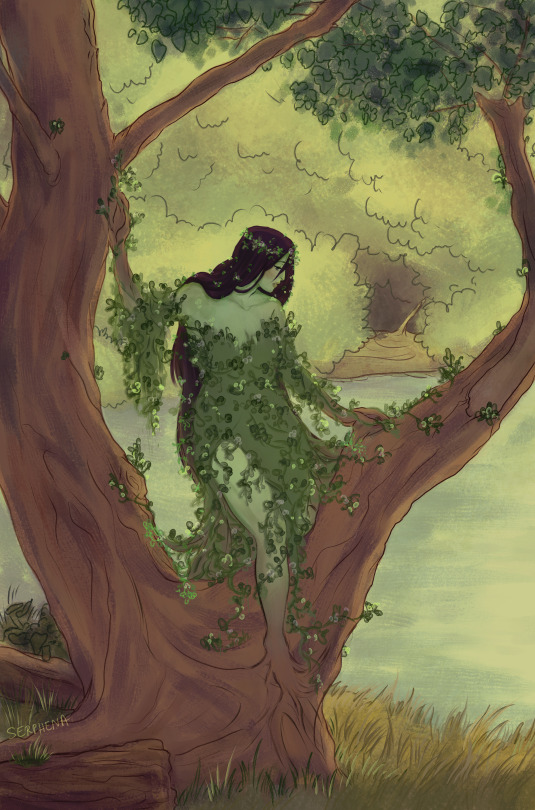
waking up the Brecilian Forest
6K notes
·
View notes
Text
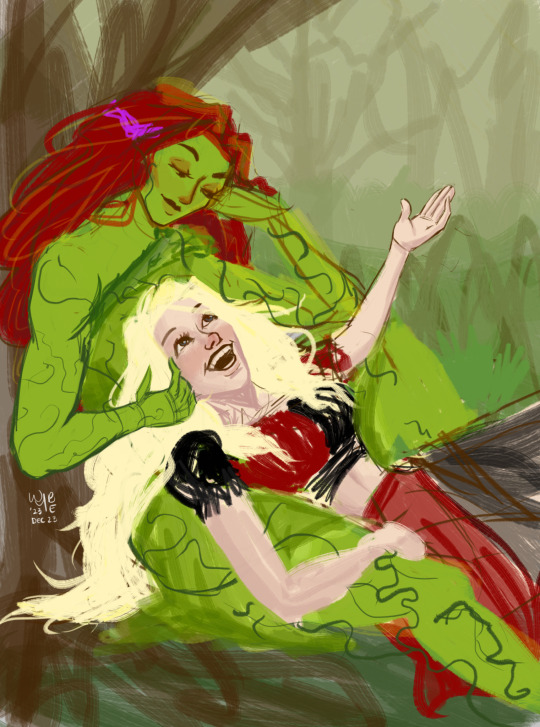
them!!!!
#harlivy#lady of the forest#pamela isley#poison ivy#harley quinn#harleen quinzel#dc fanart#dc comics#dark knights of steel#forest witch#forest nymph#if it looks wack it’s cuz I’m not using references#just a lil challenge for me#WIP 🚧#daily do something december#50+ club#100+ club
189 notes
·
View notes
Photo
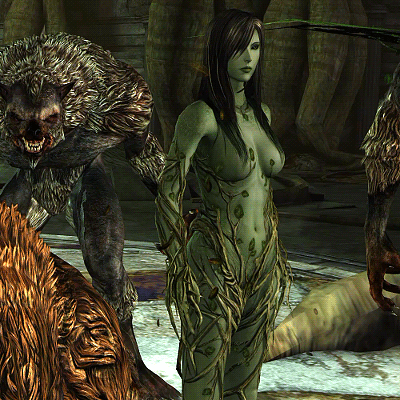



Lady of the Forest 🌲
442 notes
·
View notes
Photo
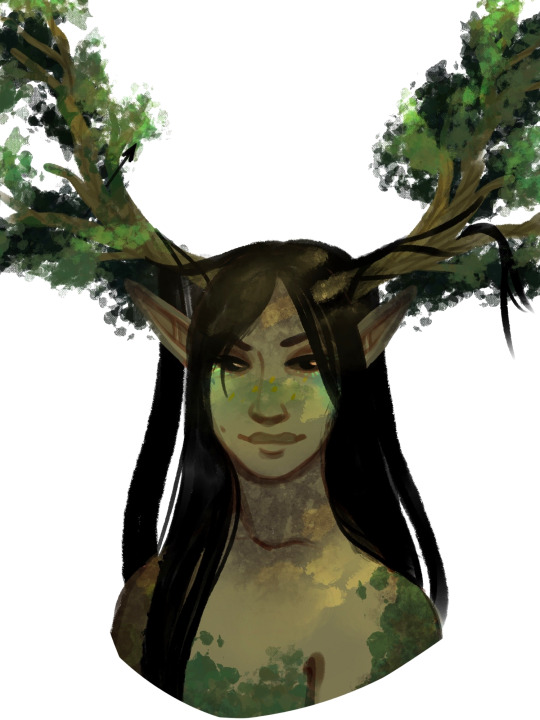
Sun-dappled Lady of the Forest from my fic, for suffering is such a part 🍃
#rinnyarts#dragon age#lady of the forest#for suffering is such a part#more procreate experiments... i love these brushes it's so much easier to draw foliage aaaa
1K notes
·
View notes
Text

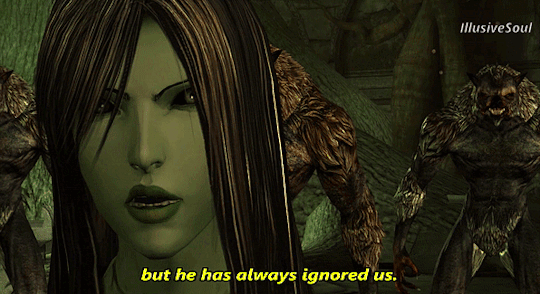

"We will no longer be denied"
#dragon age#dragon age origins#lady of the forest#swiftrunner#illusivedits#illusivesouledits#witherfang#werewolves dragon age#brecilian forest#videogamewomen#gamingladies#gaminladiesedit#dailygaming#gameplaydaily#gamingnetwork#da gifs#dragon age gifs
121 notes
·
View notes
Text

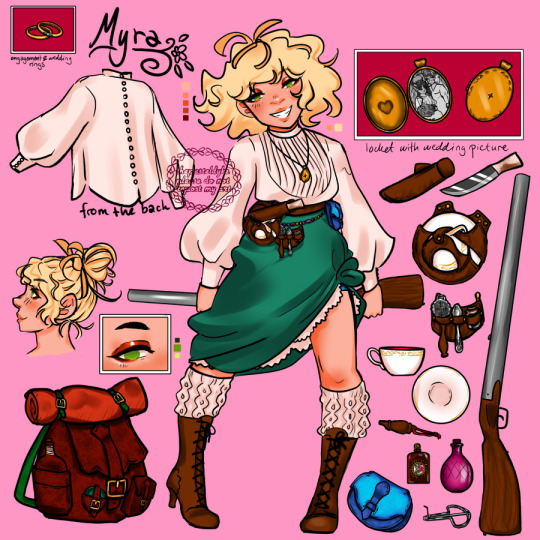
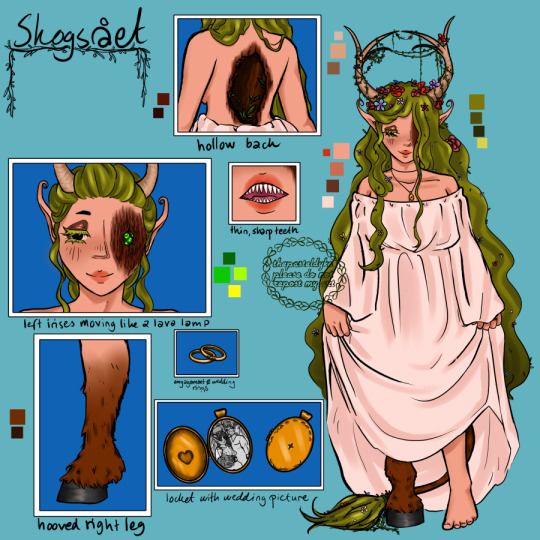
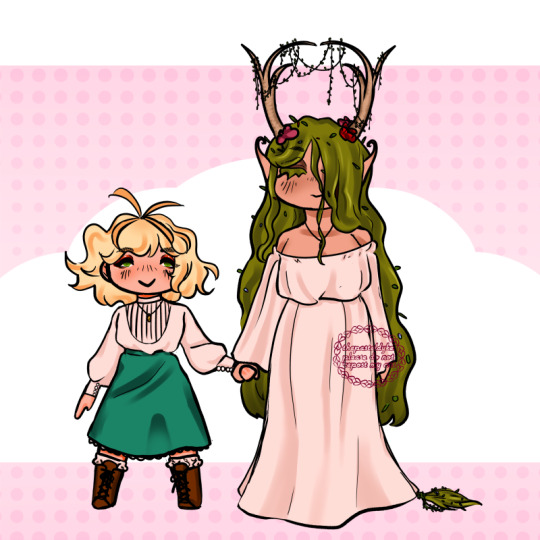
wives
my mumin rpg character myra and her wife skogsrået
#body horror#oc#original character#mumin#moomin#mymble#mymble oc#skogsrå#myra#skogsrået#huldra#hulder#forest fae#lady of the forest#rpg#ttrpg#oc tag: ttrpg#oc tag: myra#oc tag: skogsrået#2023
20 notes
·
View notes
Note
What kind of fade spirit do you think the Lady of the Forest was originally? Justice?
she doesn’t strike me obviously as justice in her goals although i think that would be an incredibly fascinating portrayal of a justice spirit, and it makes sense for zathrian to have sought out justice/vengeance when he initially bound the spirit to witherfang. something like mercy or compassion seems like an obvious fit for the care she extends to the werewolves? or something like hope or faith for the hope she has for them to change?
but honestly she’s described as just the spirit of the forest itself rather than being taken by zathrian from the fade—i’m referencing this from the wiki bc it’s been a while but i think i remember that—so having presumably lived in the mortal world for so long i would expect her identity is less clearly defined than a fade spirit which has the privilege of working only with ideals. she may have been one of the above spirits originally but she’s probably much changed even before the whole witherfang thing
45 notes
·
View notes
Text

CONFESSION:
When i play as a City Elf/Elf Mage in Origins i always side with the werewolves, the dalish are just so condescending, imagine belittling another elf just because they don't squat in the woods and don't paint their face.
Plus the Lady of the Forest is kinda hot.
64 notes
·
View notes
Text
Zathrian’s Quest
[Updated post, originally from here]

Replaying Dragon Age Origin I realised details about Zathrian’s quest that, I think, were or are a rough foreshadowing of the Elvhenan. The whole quest of the Werewolf Curse in the Brecilian Forest provides interesting information as well as questions. The following post contains
Parallel with Solas
Parallel with the Elvhenan: immortality
Blood magic and Immortality
“The nature of things is unchangeable”: another parallel with Solas’ thinking
Parallel with the Maker
What we can infer from all this?
[This is part of the series “Playing DA like an archaeologist”]
[Index page of Dragon Age Lore]
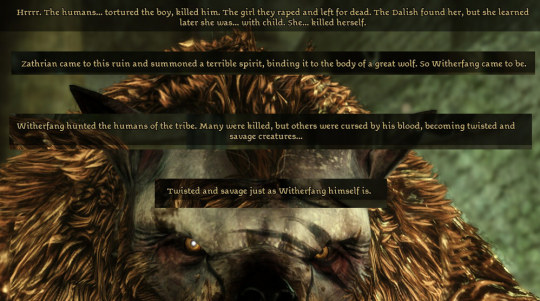
Refreshing the Quest: Zathrian is an elf hundred years old. He claims that he has recovered the ancient elven ability of being immortal, but we know later it's because a curse: he bound a Spirit [the spirit of the forest] to a white wolf.
Parallel with Solas
Zathrian and Solas share similar design (only the lack of Vallaslin in Solas makes them different, taking into account the different games engines). Later, we will realise that this design is the way elvhenan used to be: bulky bald elves [Abelas and his people share this design as well. The only one who differs seems to be Felassan, who has violet eyes and hair]. In fact, in the late game Heroes of Dragon Age, Zathrian is presented using a wolf fur in similar fashion to Solas. I think that, from a design point of view, there was an intention to encourage the player to think in the parallels between these two characters and their quests

Solas and Zathrian want to recover what was lost (For Zathrian, his family; for Solas, his “people”), but for Zathrian it is impossible. So Zathrian resorts to vengeance. Solas, on the other hand, has the power of a god, so he doesn’t need to “cling to what once was because lacks of any power to change it” [as he describes Abelas]. He just wants to and can fix his “past mistakes” that destroyed the "People”’s world. However, Revenge doesn’t apply to Solas: he doesn’t want any kind of revenge per se, but now that he has absorbed Mythal, maybe his actions will end up in a sort of revenge in her name [Let’s remember Flemeth always said that she wanted to avenge Mythal]. It’s not clear what terms Flemeth, Mythal, and Solas reached in agreement when Solas took Mythal’s power in favour of The People.
Both of them have a great care for their people to the point to make big mistakes. Zatrian's revenge started to affect his own clan, and he truly regrets this to the point to end his life to solve it (well, you can solve this in many ways, that’s not canon but it’s a possibility). Solas is all the time thinking in “his people” (the non-evanuris elvhen) and we know that he destroyed them when he created the Veil, in an attempt to protect them, to free them form their masters, and to protect the world since the Evanuris unleashed something terrible [details in “The Death of a Titan”]. In the process, Solas removed the nature of the elvhen people and turned them into mortals like the humans.
Zatrian finally sees his mistake and ceases the conflict. Solas acknowledges his past mistake, but on the other hand, he claims he had no other choice [which I personally believe since the codex in “The Death of a Titan” implies that the world had been doomed with the evil that the Evanuris unleashed]. Now he wishes he can be wrong again and someone would give him another choice than destroying the Veil and get rid of the sealed Evanuris for good.
A minor design common symboly that both of them have is the wolf: Solas represents an entity that the Evanuris made a propaganda against, calling him the Wolf Fen’Harel who is related to black wolves, while Zathrian is related to a white wolf, to whom he bind the Spirit of the Forest.
Parallel with Elvhenan: immortality
Elvhen Immortality is a big mystery in the DA series, kind of resolved in DAI when speaking with Solas [details in Solas sharing Lore: Part 1]. There, we learn that the Elvhenan immortality was a consequence of the kind of magic they manipulated and therefore, part of their own nature.
Zathrian’s story is an important quest in DAO because he may or may not offer an answer to some Elvhenan mysteries. The fact that Zathrian IS immortal in a post-Veil era is a mind-blow (we know that in Dragon Age world there are three rules that prevent mages to acquire three things with magic: instant teleportation, immortality/agelessness, and physical walks in the Fade [explicit in the codex The Cardinal Rules of Magic]. Ironically all of them were completely overruled by Ancient Elven magic. Thus, we can see the limitless power of elven magic. On the other hand, it’s worth remembering that Elvhenan were not exactly mortals in the same sense that Humans are: they were more related to the Spirits and the “brethren of the air” than to dwarves or humans. There are some hints that may suggest that they found power in dragon blood or dragon means [Mythal was a dragon, and they considered a winged shape as “divine”, implying that it may have been the draconic shape; details of all these things in posts: Ancient Elven codices; Fen’Harel’s mountain ruins, Ancient Elven codices; Vir Dirthara, and the comic series: The Silent Grove, Those Who Speak, Until We Sleep].
According to the story, Zathrian acquired immortality and agelessness through binding a spirit to a white wolf. Here is the other recurring topic in Elvhenan lore: the binding processes, specially explored in posts such as Ancient Elven codices; The Lost Temple of Dirthamen and Humanoid Dirthamen. Elvhenan had developed a culture of binding, that may be related to the original purpose of the Vallaslins. This brings a lot of questions, situations, and potential retcons.

Forced bound: Flemeth would say “a soul cannot be forced upon the unwilling”, and Solas claims that Spirits and Demons are the same: Spirits are a purpose, while a Demon is that purpose going wrong or being perverted, forced to do another purpose against their will [details in Solas sharing Lore: Part 1]. So maybe when Zathrian forced the binding, he caused the corruption of the Spirit of the Forest and the curse of the werewolves, basically spreading this savage rage in them. It seems reasonable to think that an extra side-effect of this bound process is the immortality of the one performing the ritual. This would be material for speculation about the origin of the Blight if it were not for a small detail: it has been stated in codex that this spirit [the Lady of the Forest] is not from the Fade... which is something so wrong in DA lore in my personal opinion. So far we know all spirits in DA series come from the Fade. I guess it was a mistake, or the lore was still not as mature and rounded-up as it was in DAI.
It's true we have others examples in the game: The Oak Tree who speaks in rhymes looks like another kind of strange spirit, but taking into account what he says... it's pretty clear that he is something else, like Flemeth or Anders. In them, the spirit has joined to the soul willingly, so the merge is quite different.
In fact, depending on how many other examples I see of these strange possessions along the games in minor quests (topic quite more repetitive than I had expected), I would bet that the process of binding [or more like possession of] a spirit to a material body can be fine as long as it's willingly [Anders, Wynne, Flemeth, Sigrid Gulsdotten, Solas?, for more details about why I consider Solas a bound spirit read “Solas’ nature” section in Solas sharing Lore: Part 1 ]. When it's forced, abominations happen but it seems with Zathrian that other things may occur: curses, corruption. It's clear that the spirit in this case has to be one which embodies good positive virtues. The Lady of the Forest seems to be a Spirit of the Calm or something like that [but well, she is not from the Fade, so it makes no sense to compare her to one of those spirits. But I would like to assume that the fact that she is not from the Fade is a lore mistake]. When it's a demon the one binding to the material body... things end up out of control [Grey Wardens in DAI binding themselves to "negative emotion spirits”=demons.]
What it’s clear is that in Zathrian’s quest, Immortality is part of the curse, and it exists as long as the curse exists. When we are told by Solas that the Elvhenan were immortal due to a side-effect of the kind of magic they used, would that be possible to interpret it as a curse coming from their culture of binding? I found no answers about this interpretation, sadly.
Blood magic and Immortality

This is subtle, but the Lady explicitly said that her binding with Witherfang could have never been done without Zatrian's blood. And I think there is a little hint here about the fact that Elvhenan were immortals. This is a specualtion and not a fact: according to what they say in this scene, we know that Zathrian used his blood to bind a spirit to a body of the material world (a white wolf). Somehow, the process granted him immortality, and caused a curse. If we try to use this piece of lore in the ancient Elvhenan time, we may find interesting potential ideas: Blood magic done by Evanuris to bind creatures of the Fade with creatures of the material world and take advantage of them seems to fit the hypothesis that the vallaslin [tattoos made out of blood=potential blood magic] was forced onto elvhen bodies [created by the Earth that was stolen from the Titans, Solas sharing Lore: Part 1] in order to create slaves or ,maybe even the creatures from the story The Horror of Hormak .
We know the Vallaslin are done with blood/lyrium and originally we have no idea if they were strongly magical to the point to bind several elves to an Evanuris. Via Abelas we know that drinking from the Well of Mythal [potentially part of the process to have her Vallaslin and serve her] makes you empty and bound to the Evanuris for Eternity [details in Temple of Myhtal: Part 5] . I’m speculating that the Well of Sorrows was involved in some manner during the process of the Mythal Vallaslin.
It’s true that the situation in current Thedas is not the same as it was in the ancient times. The world was not separated in Fade and Waking World, and Elvhenan were something in between spirits and mortal elves. I'm not saying Zatrian's quest shows exactly what Elvhenan did in those ancient times. But it could be a version/pararell, a pinch of truth in the broken world that Thedas was left [which is basically how Solas always encouraged us to see all what we know and read in game: Tales hide a bit of truth, but not all of them have historical accurancy].
“The nature of things is unchangeable”: another parallel with Solas’ thinking
I liked this other parallel too. Solas has a pretty elvhenan mindset and he has shown in Inquisition more than once that he is convinced that the nature of things cannot change. He says it with his friend Wisdom [who is corrupted when it is forced to fight and defend the mages that bind it], he repeated it with Cole's quest, proving himself wrong [more details in Solas sharing Lore: Part 1 ]. And he repeated it once more with the inquisitor, which depending of their race, Solas will drop some bias/predjuice proper of “your race has a nature that can't be changed”. And in most Solas-Friendly playthroughs, the player proves him wrong again.
Zathrian is pretty much the same with less opportunities to repeat it, though. He claims that werewolves are beasts, slave of their bestial nature, and that the spirit follows the same rule, even though she is calmer than a lake's water and her purpose and role inside the werewolf community seem to be of bringing calmness to them.
Parallel with the Maker
The Lady of the Forest is half humanoid and half wolf, and considering all the specualtion around Solas’ nature [Solas sharing Lore: Part 1 ] one is prone to think if similar process happened to Solas.

“You are my Maker”
This was such a strong sentence in the context of DA world. I don't believe it was thrown there casually. Maker is a big, big word in Dragon Age, and this is what gave me the suspicion to think about the previous point. Evanuris were called later as Creators of a “world” truly known by only Solas, Abelas, and Flemeth (and Felassan if he is stil alive). That Zathrian could craft a creature half spirit and half material body like the Lady of the Forest, has strong remmineses of what the Evanuris may have done with Dalish, Dwarves or even humans. What I mean by this is the following:
What the Evanuris may have done to the Dalish is to create them as creatures bind with blood magic to physical form. The way Abelas and Solas speak of the Dalish, always makes them look like “fake” elves. Maybe the origin of this disdain comes from there. There is also the The Horror of Hormak, where it’s expressed that Evanuris or elvhen mages created abominations and mismatched creatures through magic, becoming themselves into “makers”.
What the Evanuris may have done to the Dwarves is very unclear, but in the Tresspasser DLC there are some bits of information that may suggest that Mythal infused the “workers of the Titans” with a soul [making them able to dream], so they were not empty anymore. A long interpretation of this is done in the post Deep Roads [DLC Trespasser]: Lower Walkways, however I have a lot of mixed feelings with the source of it: the codex Torn Notebook in the Deep Roads, Section 3 was written by a clanless Dalish that was not even a Keeper.
What the Evanuris may have done to the humans is even unclearer and not even possible to speculate, since there is not even a piece of information about them from Elvhenan sources, but if they meddled with Dalish and Dwarves, they could have meddled with humans if they wanted to.
A potential implication of the fact that the Lady of the Forest called Zathrian her Maker, could be that it’s a very vague hint that the lore is telling us that the creatures created from another race see them as Makers, and maybe some bit of this implication may or may not apply to the human Maker.
What can we infer from all this?
If we compare this old lore with what Solas may have done to the Evanuris we can come up with some speculations.
Speculation 1: We know that the Evanuris unleashed something terrible into the world [we don't know what but it may be the Blight, or something else; details in “The Death of a Titan”]. In the process, they may have killed Mythal [this logic is implied by Solas and the Dev’s notes in “The Death of a Titan” but never said explicitly].
Solas claims that he stopped the Evanuris by sealing them when they made something that was the last straw, which was Mythal’s murder, but I suspect it was something else too due to the codex and dev’s notes we find in “The Death of a Titan” mural: the thing that they unleashed was truly the real last straw, which does not exclude that it may be related to Mythal’s death [hence my speculation to relate both events]. That Solas does not say it explicitly is because he wants it to be as unknown as possible [probably because he doesn’t even want a reflection of it in the Fade]. I wrote a long analysis of this in the post “The Death of a Titan”. In that post I explained that there is a chance that the Evanuris may have been bind to lyrium and this forceful procedure caused their corruption or the corruption of the Lyrium into the Red Lyrium [hence we find the Whispers Written in Red Lyrium]. This may have been faster if it’s true that Andruil was blighted already [read Andruil section in Evanuris or codices related to her in Ancient Elven codices, Temple of Mythal]. Taking into consideration the young lore expressed in Zathrian’s quest, one could explain this corruption of the lyrium as a “disease” [wether it is The Blight or something else that causes The Red Lyrium] which may be a consequence of this forced binding.
Personal speculation about this: Solas seems to know a lot about The Blight, but he does not understand red lyrium, so I'm inclined to think that the binding procedure caused something that Solas did not expect: red lyrium, while the big evil unleashed by the Evanuris is the Blight. He understands a lot more Blight magic and the Blight: in the mural “The Creation of the Veil”, it seems to be implied that Solas studied how to create the Veil to contain the Blight in the Black City, and may have used dragons to protect the "gates" of access to this place, which are the only creatures we know so far who are resistant to it.
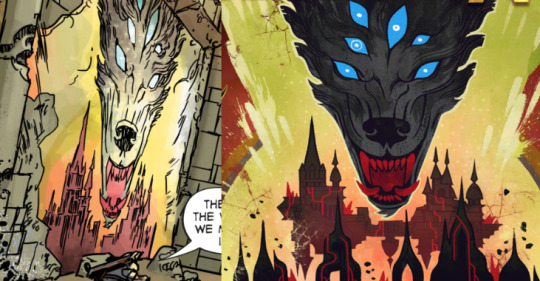
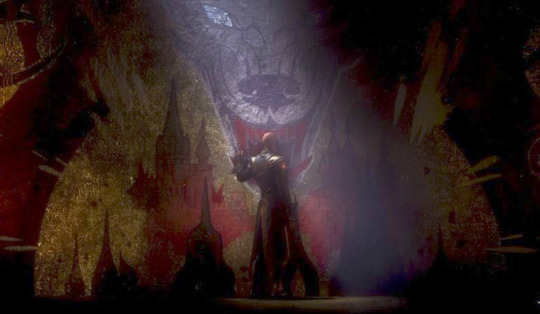
On the other hand, no other mural speaks about red lyrium as the one recently done by Solas: in the comic The Missing, we find some parts of the mural “The Destruction of the Veil“, which means that the trailer where we saw this mural for the first time, with Solas touching it, was a ruined temple of Andruil located in the Forest of Arlathan. As he usually does with his murals, they seem to reflect a persistent thought in his mind that he expresses through art in order to find courage to execute them. In this last mural, the destruction of the Veil and all the pain that will cause to Thedas is something that will hurt Solas deeply [maybe even corrupt him if he follows the same rules than the spirits, in that case, this brutal change of role may affect him], because he would love to find another solution and be “wrong” [as he claims to a friendly inquisitor] but sadly he didn’t find any other. We know due to the history, that he always tries to pick the less evil option, but sometimes, there are nothing more than evil ones to pick.
Speculation 2: Another possibility I think about which relates Zathrian’s quest with the latest lore we have, is that maybe the “evil unleashed” by the Evanuris is the one related to The Horror of Hormak, where once more we find the recurring theme of the binding process: creatures with different souls and bodies are bind in an abomination, and the resulting creature is corrupted beyond salvation, as the two minds fight to exist in the same combined body. This seems something that may have horrified Fen’Harel, and also a knowledge he wanted the world to never access again, hence the collapse of the cave underground, sealing this horror, and claiming that the Evanuris had to be stopped for good [details in “The Death of a Titan”]. Since Solas doesn’t lie, and he also confessed the Inquisitor that the Death of Mythal was what motivated him to stop them, I speculate that some experiment related to The Horror of Hormak was tried to be applied to Mythal [a dragon being, speculated to be the Divine shape that the Elvhenan aspired for in order to acquire divinity] and killed her in the process [which is something rare, since the Evanuris “are not easy to kill”, according to Solas’ words]. Therefore, both events may end up related, and Solas never lied, he technically omitted some piece of sensitive truth that he has been hiding since forever so nobody would be tempted to create more abominations again.
In both speculations, the binding process was so wrong, that may have caused a disease/curse that began to spread [Blight or Red Lyrium], pretty much like Zathrian ended up causing the curse of the lycanthropy when he forced the binding between the Lady of the Forest and Whitefang.
However, the con of this interpretation is that we know that the immortality of the Elvhenan/Evanuris is not a consequence of this binding. The Elvhen have always been immortal as a side effect of the magic they manipulated [Solas explicitly says so in the Elvhenan section of Solas sharing Lore: Part 1]. I can see, however, the Evanuris wanting to be Dragons since they are powerful creatures, and power is directly related to Divinity in DA series.
[Index page of Dragon Age Lore ]
16 notes
·
View notes
Note
hellooooo!~ could I have an analysis for muse of life and/or sylph of breath? The first one was determined through the official classpect list and the second one was through guesswork and looking through an old classpect blog. Curious to see how they compare and contrast :)
The Muse of Life [symbols: light bulb, vines]
The Muse class has its basis in the ancient Greek Muses. An example would be Jesus from Christianity.
The Life aspect’s main theme is growth. You can find its official description here.
A Muse of Life is among those who are masters of energy to influence. This is the “classpect group” they belong to. Members include: the Muse and Lord of Life/Doom. These classes are opposites and inverses of each other that master the Life/Doom dichotomy (energy to influence). A description of classpect groupings can be found here.
The Muse of Life passively masters the Life aspect. Passive classes are guided by others or act for the benefit of others. They are more likely to be kind, but less likely to stand up for themselves. This can be seen in extremes with the Muse, who is an entirely passive class. Muses and Lords have complete domain over their aspect and everything it symbolizes. Where Muses possess all the abilities of the passive classes, Lords possess all of the active. Simplified, the Muse of Life is motivated by others to be a master of growth. They are entirely dependent on the actions or motivations of others to accomplish their goals, but do so with godlike ability.
In personality, the Muse of Life aims to inspire others and keeps trying even if they fail. Personality descriptions can be found here.
Their archetype is the Outlier Child, defined by inspiration and growth. Archetypes are explained here.
Their opposite and inverse is the Lord of Doom, who actively masters caution.
A classpect or “god tier” is an individual’s best self. All classpects go through a journey from unrealized, to struggle, to realized. When a character is unrealized, they neutrally exist as their inverse. On their struggle, they will wildly flip back and forth between their inverse and true classpect. In their worst moments they will act as their inverse, in their best their true classpect. When realized, they will stabilize as their true classpect. They will still have room to grow, but will become happier, more successful people.
This means that the Muse of Life begins life motivated by themselves to be a master of caution. When their struggle arrives and they are at their worst, they will continue this behavior in negative extremes. However, when at their best, they will find purpose in instead mastering growth for others. When realized, they will stabilize and continue to be a master of the Life aspect passively, in a positive way.
They share their archetype with no one, as a master classpect.
The Muse of Life would quest on a planet similar to the Land of the Mutable [Muse] and Life [Aspect]. An example would be the Land of Evolution and Invasion. An explanation of planet naming conventions can be found here.
Two possible gods, or denizens, to reign over their planet would be Hebe (Goddess of Youth) or Asclepius (God of Medicine). Other Life aspect denizens can be found here.
When the Muse of Life completes their planet quests and dies on their quest bed, they would rise to ascension on the wings of butterflies (symbols of pollination). A list of soul animals can be found here.
The characters that I have currently classpected as Muses of Life are: Penny from Dr. Horrible's Sing-Along Blog, Goldberry from Lord of the Rings, Cheza from Wolf's Rain, and The Lady of the Forest from Dragon Age.
If any of the links not connected to my blog break, the content can be found on my Google Drive.
Official Aspect Descriptions
Personality Descriptions
Aspect Denizens
Sylph of Breath analysis will be in a separate post!
#muse of life#god tier analysis#classpecting#homestuck#my post#ask#penny dr horrible#dr horrible's sing along blog#goldberry#lotr#cheza#wolf's rain#lady of the forest#dragon age
4 notes
·
View notes
Text


her throne is everywhere
Dark Knights of Steel #10
#poison ivy#lady of the forest#yasmine putri#dc comics#pamela isley#dark knights of steel#dc#lara lor van#harley quinn#comic book art#comics
51 notes
·
View notes
Text



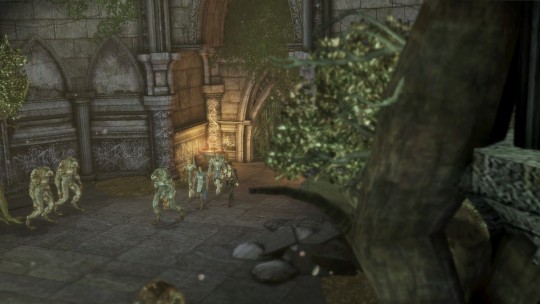





Dragon Age Origins: The Nature of the Beast // Guinevere Amell
"I have known pain and love, hope and fear, all the joy that is life. Yet of all things I desire nothing more than an end."
13 notes
·
View notes
Text

So how do we feel about half dryad, half Saytr earth goddesses? Or is it Fawn like Narnia? Idk but you know
#anonymous_h#original character#earth goddess#Pei'Alitz#lady of the forest#digital art#drawing#art#dryad#saytr#i love vines as hair#it looks pretty#she got orchids in her hair#and petal scales
3 notes
·
View notes
Text
Bad Medievalism Bingo (and the question of research)
I finished Lady of the Forest (characterization good, pacing uneven) and I have Thoughts about its approach to medievalism and medieval history. It may seem ungenerous to critique a novel that I finished (with a nice Robin Hood!) but I want to use it to think through some things because this really isn’t an unusual problem. The cheerful author’s note says that she uses history “like a crazy quilt, stitching together the truthful patches with the fictional ones.” But my impression as reader was of a sort of dark Ren Faire medievalism, featuring endemic violence against women, religious hypocrisy and incompetence, sadism, dirt, poverty, cruelty, bloodshed, sexism, prudery, witch-burning, village-burning, racism, anti-Judaism, Islamophobia, and violent homophobia. If I thought the Middle Ages had been defined by these things, I don’t know why anyone would read novels with this historical setting... though it would explain the low enrollments in the medieval history courses I teach.
The thing is: not only does the author discuss her approach to history, she also discusses the sources she uses: one popular overview of the Plantagenets, one classic (if decades-old) history ditto, a mid-century history of medieval English outlaws, and a trilogy of solid overviews of medieval English social history designed for general audiences which I know because I had and cherished them in high school. Yes I was very normal, thank you. She says that she’s more interested in exploring/interacting with Robin Hood’s long literary legacy than details of history, and that’s fine! Indeed, surely, desirable! What I really don’t get is why medieval history gets imagined like this. The most notable exclusion is of 20+ years of scholarship on medieval women, in favor of a depiction of women as despised and mostly passive objects.
I just... this version of medieval England is so unremittingly bleak. No one has any idea how canon law works (consent mattered to the validity of marriage, and mattered more than the presence of a priest! This undermines a whole plot arc!) Or, for that matter, how religious orders work. There are lots of hovels (I’m offended on behalf of Nottingham, which was a prosperous market town thank you very much.) Public health is depicted as abysmal (and I double-checked and yes, even 30 years ago when the book was written, there was published work debunking this old cliché, though much less than there is now.) This world is awful. I don’t really want to be here, even for the sake of hanging out with Robin Hood. And to clarify, I’m not usually a joyless pedant! I may be a pedant (ahem) but I like historical fiction! But not only do I not understand how this particular author got to this historical fantasy from the historical research she describes, I just don’t understand why writers or readers would choose this fantasized version of the past.
#fun with medievalism#or... the opposite of that really#historical fiction#i spent a lot of this book going: i hate it here and i want to go home (to the real 12th century)#or at least a less shitty version of it you know?#anyway#i love robin and marian#i support them#also#greenwood shenanigans™#lady of the forest
85 notes
·
View notes